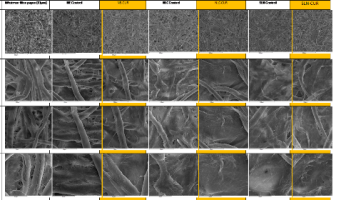
Sophia Hatziantoniou
University of Patras, Greece
Title: Nanolipidic carriers containing curcumin: Preparation and physicochemical characterization
Biography
Biography: Sophia Hatziantoniou
Abstract
Statement of the Problem: Nanoemulsions (NE), solid lipid nanoparticles (SLN) and nanostructured lipid carriers (NLC) are colloidal carriers for bioactive compounds. They are applied in therapeutic, diagnostic and cosmetic formulations. Curcumin (cur) is a polyphenol found in the rhizomes of the plant Curcuma longa L., and is traditionally used in the treatment of many diseases because of its multiple properties. The high lipophilicity of the molecule renders it difficult to incorporate in an acceptable final formulation. The above drawback as well as the intense color and reduced chemical stability of the molecule in light and air is attempted to be overcome by the use of nanotechnology. The aim of this work is to investigate the possibility of using the benefits of nanotechnology in the efficient topical delivery of curcumin formulated as nanoemulsions, solid lipid nanoparticles and nanostructured lipid carriers.
Materials & Methods: Three types of nanocarriers containing curcumin (NE-cur, SLN-cur & NLC-cur) and their corresponding control samples (NE-control, SLN-control & NLC-control) were prepared using triglycerides (Solid TG or Liquid TG or Solid-Liquid TG combination) and phosphatydylcholine (Egg PC or Soy PC) was also used as lipid phase. The particle size and their colloidal stability over time was assessed by Dynamic Light Scattering (DLS), after centrifugation or storage at 4oC. The incorporation efficiency of curcumin in different nanocarriers was determined by size exclusion chromatography (SEC) and UV-Vis spectroscopy. Their film forming capacity was examined by scanning electron microscopy.
Findings: NEs, SLNs and NLCs of high curcumin content were successfully prepared and physicochemicaly characterized. Their stability was monitored over a period of 90 days. The high percentage of the incorporated curcumin and the uniformity of the particle distribution as well as the retaining of these characteristics overtime are factors indicating that the nanostructured lipid carriers and solid lipid nanoparticles are more suitable carriers for curcumin in comparison to lipid nanoemulsions.

Figure 1: Film forming capacity of different nanocarriers as monitored by Scanning Electron Micoscopy

